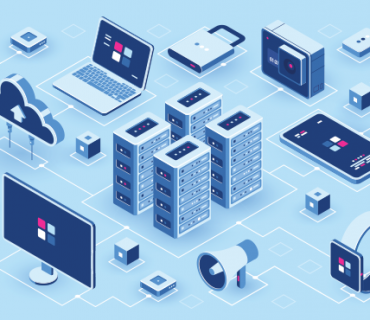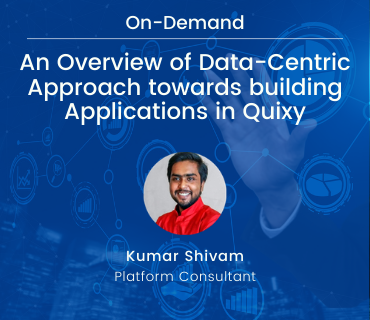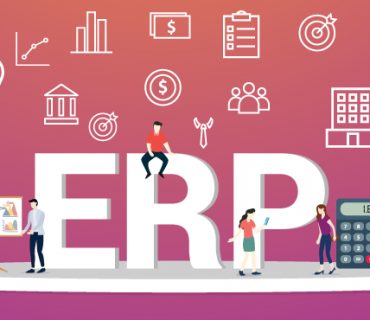Business Process Management Platform
Achieve greater operational efficiency with effortless business process management platform, built for speed and agility.
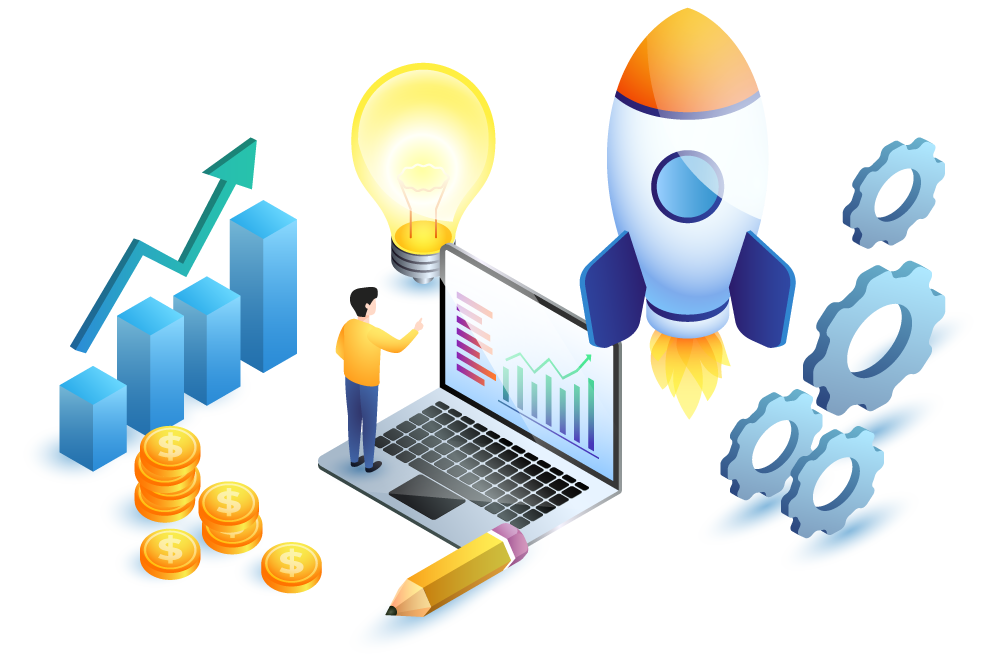
What is Business Process Management?
Business Process Management or BPM is the process of optimizing organization-wide processes to enhance efficiency and output. It is a complete solution that begins with identification & management and ends with analysis and process optimization.
With BPM, you do a lot more than just automating – you streamline the entire process to remove bottlenecks and ensure smooth sailing. BPM revolves around the output or the result and not on automation itself. It may be a part of the process and is possible through the BPM software but BPM can be managed manually as well. This effective methodology has the capability of turning the entire business on its head and transforming an unstructured system into a seamless process.
Successful BPM encompasses improving processes, organizing based on outcome, establishing new processes if required, bringing in a certain level of standardization, making processes agile enough for changes, and formalizing the way things are done. BPM is a continuous exercise and not a one-time deal.
Frequently asked questions about BPM
What is a business process?
A business process can be defined as a set of tasks that are linked with each other. Each process ends with the delivery of an offering to the customer who may be an employee or partner as well. This could be a service or a product.
Business processes involve multiple inputs that are defined very clearly. They have contributing factors as well, which determine the output. BPM processes are often continuous with room for last minute action, making them very agile and convenient.
What is no-code BPM?
No-code BPM is nothing but a BPM software solution that does not need programming. It is developed to be a self-service tool that any member of the organization aka citizen developers can use. It empowers the entire team to understand processes and automate them with flexibility.
What are the advantages of BPM?
The biggest benefits of BPM are:
- Enhanced productivity
- Agility
- Transparency
- Reduced risks
- Employee satisfaction
- Sustainability
- Improved focus on customers
- Integration of technology
- Ability to measure
- Consistency
What are the types of business process management?
There are three main types of BPM solutions:
- Integration-centric: There is little to no human interference in this type.
- Document-centric: Documentation is of the highest importance here. Human collaboration is also crucial.
- Human-centric: Humans perform the majority of tasks here but automation helps make their work easier through warnings, notifications, etc.
The right type of solution for your business will depend on how you run your day-to-day tasks. Get in touch with us and we will help you choose!
What are the stages of business process management?
While there are many different approaches that can be taken to create and improve business processes, the stages of BPM remain consistent. They are:
- Design: Good design helps remove many problems. At this step, businesses come up with an efficient design for process improvement.
- Identifying Stakeholders: Identifying all stakeholders and their needs is the next step.
- Definition: Defining the current process will help zero in on areas of improvement.
- Measurement: How is the current process performing? What are the qualitative and quantitative measures?
- Identifying bottlenecks: At this step, you should identify the roadblocks that are hindering improvement.
- Analyzing the root cause: Identify the problem, its cause, and the best solution to overcome it.
- Implement solutions: Once you develop solutions, you can prioritize them and start implementing them.
What are the KPIs in BPM?
The long term KPIs are:
- The average time required to complete a process
- The average time taken to complete each step in the process
- How many process instances are there
The short term KPIs are:
- The time needed per step
- Processes created/completed per hour
What are the phases in the BPM lifecycle?
There are 4 phases:
- Design
- Execute
- Monitor
- Optimize
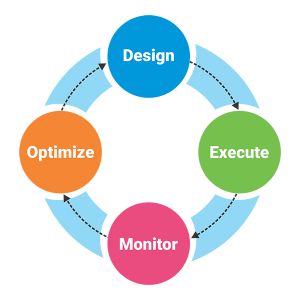
How do you choose a BPM software?
There are 10 things to consider while choosing BPM software:
- Problem statement
- Usability (user experience)
- Analysis
- Technology
- People, support, and governance
- Content management
- Cost
- Integration
- Hosting
- Mobility
What should be the considerations when purchasing business process management software?
Here’s what we think you must consider while purchasing a business process automation software:
- Purpose: The first question and path to the right BPM software is your purpose. What is the process-related purpose or problem you are trying to solve?
There are various kinds of BPM software in the market that serve different purposes. Small-scale businesses might need simple process automation with a basic interface while large-scale corporates might need a comprehensive system that may need departments to interact within with other software.Always, define the purpose.
- Price: In the end, it is all about the amount of money that’s worth and you’re willing to spend. It is a big influencer affecting your decision. Go through different price ranges and their offerings. See which suits you the best for your purpose as mentioned above. You may get confused as to what is worth- in that case, check out credible sites like G2 that rate and review BPM Software. Quixy has been rated as a top BPM platform and value for money too.
- Product Integration: If you have other apps used in your organization or other existing data too- make sure your software can integrate these. No-code platforms allow third-party integrations and offer a customizable API platform to seamlessly integrate your in-house applications.
BPM software is to relieve you from process and IT hassles. So choose one that does that.
- Implementation Time: Time is an extremely valuable resource for an organization hence, businesses must enquire beforehand the timelines for implementation. Businesses should ideally ask their BPM providers about the timeline for the project- from paperwork signing to seeing the software in action. No-code platforms are perfect when it comes to time crunches but quality assurance since they can be built and deployed within minutes and hours.
- User Experience and Friendliness: Often, organizations build a wonderful and extremely efficient system but most times they are so complex that the customers fail to navigate or even understand. Hence, before going for a BPM software, always make sure that it is customer and user friendly and provides a seamless experience. Have trials for some users to explore options and get feedback too!
- Customization: A BPM software that doesn’t cater to the organization’s needs is redundant- and that goes anti-BPM because its whole purpose is to ease lives. A good BPM system will and should always cater to the organization’s needs and requirements. Spend time looking at which features and integrations are “must-haves” for your business and choose a BPM software that provides you that.
No-code apps are most flexible in this aspect as well as they provide endless possibilities for customization and easily integrate into third-party apps as well.
- Security: Many organizations tend to neglect security as a major factor in evaluating their BPM software. But, please do make sure while choosing a BPM software that security is of utmost importance.
Starting with the choice of cloud infrastructure that hosts the platform, the platform per se, and the ready-to-use applications designed on the platform – all of these three crucial aspects necessarily meet the highest security standards.
What are the relevant business process management software trends?
Let’s look at some latest and the most relevant BPM trends that can help you become and stay a leader.
- It is not just process automation, it is process optimization
Yes, automation is great but you know what’s greater? Optimization. BPM Softwares today are not just expected to automate processes for you but check errors, bottlenecks and eliminate them to optimize them. Bots are everywhere- to eliminate waiting time. No-code apps- to integrate and be flexible to seamlessly change workflows: error freely.That’s an optimized BPM software’s tea, bread, and butter.
- Increased and Seamless Collaboration
Well, today and onwards, remote working has caught its pace and made its space within our lives. We all know the importance of a collaborative workforce but implementing is a task. The time has come to stay on top of the trend by investing in a seamlessly collaborative BPM software that lets teams work together, in real-time and have constant updates.
For example, features like hassle-free data integration and process-related alerts on a BPM system could easily decrease the number of emails and other communication that infests workplaces irrespective of the industry.
- BPM x No-code
The pandemic has made organizations realize that just IT is not sufficient. No-code and the rise of citizen development have made businesses rethink processes and their functioning. You need to embrace the trend since it lets you build and deploy apps as per your needs within hours! By using visual development environments featuring drag-and-drop, no-code apps alleviate the BPM software experiences and reduce the burden on IT.
Business Process Management Blogs
Learn about BPM - Infographics
On-Demand BPM & No-Code Webinars
How can different job functions benefit from BPM?
How can different industries benefit from BPM?
BPM eBook

Key Takeaways
- Reduce expenses
- Finish projects faster
- Reduce fails and clear backlogs




